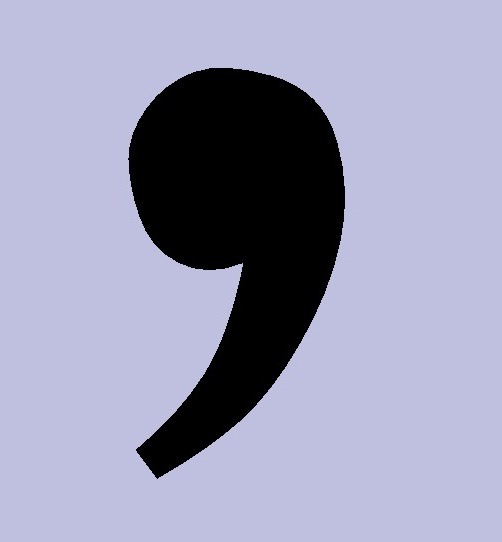"Including": the comma is needed or not? In which case commas are put: punctuation rules
Members of the proposals that are in the nature of additional information are passable to expand the content of the main statement relate to the category of connecting. They are introduced using individual words, combinations or particles and stand out on a letter of commas. More information about such words, or rather about specific examples of using some of them, we will talk.
When it is set near the Union "including" comma
Including is a union that is used to clarify or supplement the information by joining a new member of the sentence to the already existing.
The letter should be remembered that the connecting turnover (which includes the Union "including") the comma separates from the rest of the sentence. For example:
- Today we have gathered all the guys including Pavlik to discuss the current situation.
- They already knew everywhere, including In our town.
And so that the connected member or turnover is considered separate and demanded allocations from two sides with commas, you need to pay attention to the meaning of the statement.

So, in the case when the withdrawal of turns does not distort the structure of the proposal - it can be considered separately:
- In all his works, including And in this story, the author is amazingly truthful and restrained (removal of turnover is possible, therefore it is allocated with commas).
But in the case of example: "In all, includinge and in this work the author skillfully transfers reality, "the seizure will break the structure -" in all ... work ", and therefore the turnover is not separated.
Is it raised between the connecting turnover and the union "including" comma
Please note that the Union "Including" is not an introductory word, which means it does not allocate with commas from two sides. Moreover, if before the titled Union, additional unions "A" or "and" are used, then they form a single combination and the comma is not separated:
- Everyone got merit and includinge Tolik.
- Natasha loved to draw portraits, and including And by memory, but shy to show them to their friends (as you can see, between the unions and a combination of "including" the comma does not put).
But pay attention to another detail - for the proper use of the Union "including", the presence in the proposal of an integer indication is necessary, part of which will be connected with this union. Compare:

How are commasted near the Union "For example"
It is often found on the letter another mistake - an extra comma after the word "for example." The commas, by the way, in this case are put on several general rules that we now give.
If the word "for example" stands before the connecting turnover, to which it relates, then the entire turn is allocated, not the word:
- Some girls eg Tanya, helped in cleaning the class.
If the turnover, including the word "for example," is highlighted by dash or brackets, then after "for example" commas are set:
- Some girls ( eg, Tanya) helped in cleaning the class.
If the word "for example" turns out to be behind the connecting member, then in this case, it is allocated to commas on both sides:
- Some girls helped class cleaning. Here is Tanya, eg, Washed the desks.
After "for example" may be a colon, in situations where it is after a word with a generalizing value in front of homogeneous members:
- Some fruits are dangerous to give suffering allergies, eg: Oranges, pineapples, as well as strawberries and other red berries.
If the mentioned word refers to the entire proposal or to its appropriate part (in the case when it is complex), it is separated from two sides by commas:
- And how do you do if eg, will we meet hooligans?
This rule refers to turns, including combinations "in particular" or "for example" and similar to it.
About how empty words stand out
Introductory words help clarify said or emphasize some part of it. They always stand out in oral speech by pauses, and in writing - commas. If such words are positioned at the beginning of the proposals - the punctuation sign is placed after them, and if at the end, in front of them, including the comma needed when the introductory word is in the middle of the sentence. Then it is isolated from two sides.
How stands out on the letter "However"
The word "however" performs both the role of the introductory word and the union or interjections. Therefore, the release of it with commas depends on which role it performs in this proposal and where it is located.
It should be known that it never starts a sentence as an introductory word. If it follows a separate turn, then after "however" the comma is set:
- butLooking around, he quickly realized how to be further.
And in the middle of such a turn, it stands out on both sides:
- He listened to the story, not quite butInteresting, and diligently smiled.
When using the specified word as interjections, after and before "however", the comma needs:
- buthow you grew out during this time!
If "however" is used as the Union at the beginning of the sentence - it is not separated by the comma, and when connected with its help parts of a complex proposal - the comma is placed in front of it:

How are commas with the word "please"
How to stand near the word "please" commas depends largely on the context in which it is used. If it is used as an introductory word, in order to attract the attention of the interlocutor or as a polite treatment, it is allocated by commas for this type of words:
- You are welcome, do not remember the flowers on the flower bed.
- Tell me you are welcomeHow to get to Ivanova Street?
- Sit down, you are welcome.
But there are situations in which the commas are not placed next to the word "please". First, if it is used as a particle with the value "yes", and secondly, if "please" enters the phrase:

How are commasted near the word "therefore"
Reflecting whether there should be a comma to stand before or after the word "so", it is necessary to pay attention to the situation in which this adverb is used. Most often it is used as an analogue of the Union in complex proposals with a causal meaning:
- Sky clouded clouds, so All expected rain.
- The cup of treacherously leaned so A dark stain appeared on the shirt.
- From night hit frost, so The sidewalk was covered with ice crust.
In such situations, it is put before "therefore" comma, as before the union, which connects two parts of a complex proposal.
By the way, this word is often confused with the introductory, highlighting it on a message with commas, but it enters into a group of particles and adverbs that never belong to the introductory words, and therefore do not need mentioned allocation. 
Summarize
If you think about how the connecting speeds or introductory words stand out on the letter and whether the comma is set after the word "so", remember the nuances that allow you to accomplish the punctuation marks. For this:
- pay attention to the proposal context;
- remember that the introductory word, like an attachment, is easily removed from the sentence;
- do not forget what words can not act as the introductory;
- if the word is still input, apply the rules for allocation of them in the letter;
- and when using adverbs, "so" remember for parts of a complex offer.


